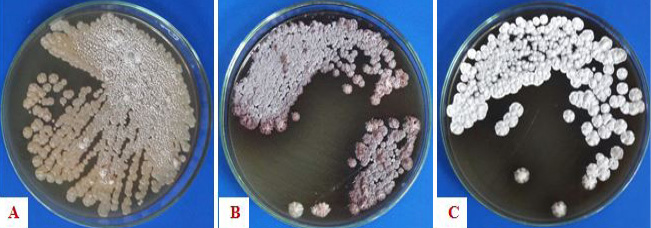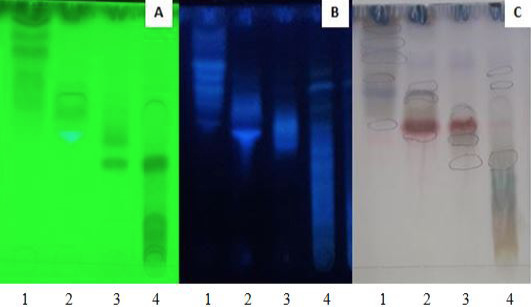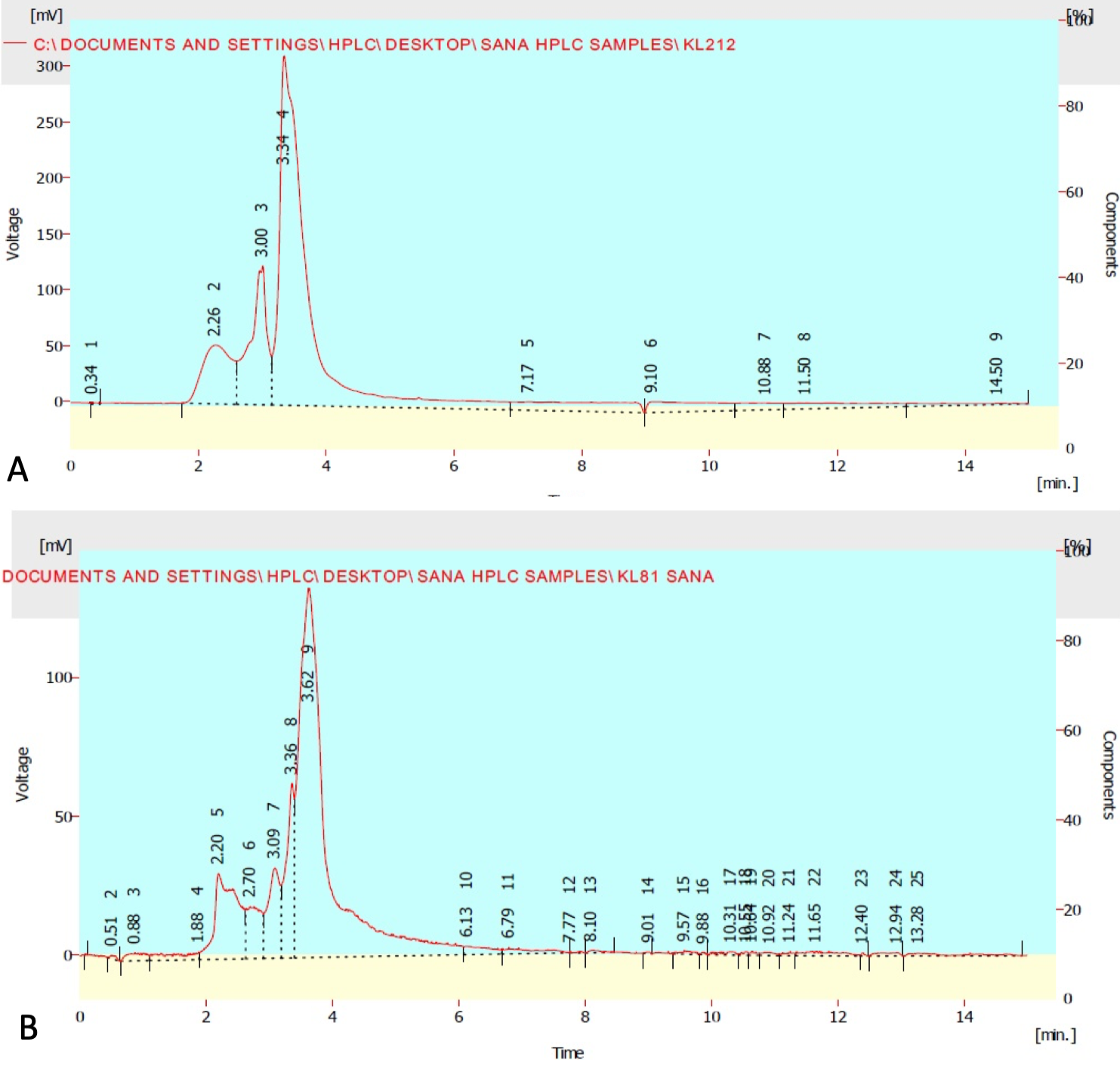Taxonomic Diversity, Antimicrobial Potential and Metabolite Profiling of Aquatic Actinobacteria from Kallar Kahar Lake, Pakistan
Taxonomic Diversity, Antimicrobial Potential and Metabolite Profiling of Aquatic Actinobacteria from Kallar Kahar Lake, Pakistan
Sana Aslam1, Wayne Thomas Shier2 and Imran Sajid1*
Pure cultures of aquatic actinobacterial strains on glycerol, yeat extract, malt extract (GYM) agar. (A=SAk-13, B=SAK-1, C=SAK-21).
Phylogenetic relationship of the aquatic actinobacteria with closely related taxa based on 16S rRNA gene sequence where evolutionary history was inferred using the neighbor joining method.
Metabolic fingerprints of actinobacterial strains on TLC plates (A) under UV at 254 nm (B) under UV at 366nm (C) after treatment with anisaldehyde/H2SO4.
HPLC-UV chromatograms of aquatic actinobacterial strains SAK-25 (A) and SAK-9 (B) showing three and five prominent peaks at different retention times respectively.
UPLC-MS spectrum of different fractions obtained from chromatographic separation where (A) showed a total ion chromatogram of fraction-2 (SAK-9) at retention time of 4.71 min and (B) chromatogram of fraction-3 (SAK-12) at retention time of 5.87 min.















